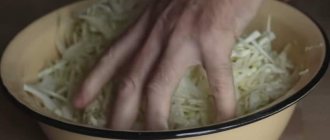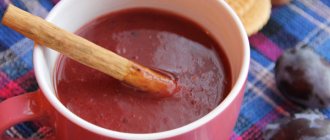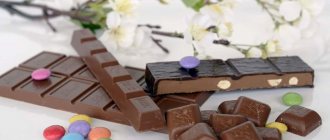What is kinetic sand?
Kinetic sand is a special material for children's creativity. It resembles ordinary wet sand, however, it does not contain water, does not stain clothes and hands and does not leave any marks on surfaces. In addition, it easily assembles into a single mass. So you don’t have to worry if sand gets on your carpet or sofa.
Kinetic sand holds its shape perfectly, however, it easily disintegrates with one touch. This is an interesting and convenient material for children's creativity!
Kinetic sand is just like regular wet sand!
Flaws
When thinking about what to do with kinetic sand, parents should first think carefully about whether they need to buy such an educational “toy” for their child at all. It, like any subject, has its drawbacks.
Among these are:
- price;
- the need for regular cleaning;
- such sand cannot be sifted through a sieve;
- the possibility of grains of sand getting stuck in the fabric;
- Sometimes it emits an unpleasant odor.
Also, some parents say that magic sand sometimes sticks to their hands, especially to children's palms. This usually happens when your hands become sweaty or wet. However, if you follow the rules for using such products, there should be no problems.
What to do with kinetic sand?
Playing with sand perfectly develops fine motor skills, imagination and fantasy, and also serves an educational function. There can be a lot of game options, just like with regular sand.
We are building.
Of course, this sand holds its shape perfectly, so it is suitable for building towers, castles and other figures using special molds.
It is very convenient to sculpt and build from such sand!
Let's sculpt.
Kinetic sand is easy to model. You can take a sheet of paper and make a small picture on it. Or, if your baby is learning numbers or letters, you can try to sculpt them, at the same time reinforcing what he has learned.
We're digging.
Hide several small objects in the sand and ask your child to dig them out using available tools (spoon, stick, scoop).
We cut it.
Kinetic sand cuts beautifully, so it's a great way to teach your child how to use a knife. Invite your child to cut a piece of the molded Easter cake for you. To begin with, let him use a plastic knife, then you can move on to a real table knife.
We take prints.
Level the sand and use it as a canvas. Draw on it with sticks, imprint various objects, make patterns. You can play the game “guess the silhouette”. You make prints of several objects, and the baby guesses what kind of object it was.
Of course, kinetic sand is not a replacement for real sand, because its properties are slightly different. But this does not make it any less interesting and entertaining! We are sure your child will be delighted!
If you liked the article, please share a link to it
Age in practice
At what age can you play with kinetic sand? We have read the manufacturers' recommendations, but the instructions remain the same. Not everyone follows them in real life. And there's nothing wrong with that.
Magic sand can be used when a child begins to be interested in the sandbox. Some people buy this “toy” for the development of babies aged 10-12 months.
However, a lot depends on the child. It is not recommended for children under three years old to play with magic sand without supervision. Until this point, use is not prohibited, but only under close adult supervision.
Important: such products are great for developing fine motor skills.
Instructions for use
Despite the fact that the innovative material is considered safe, parents need to carefully ensure that grains of sand do not get into the baby’s eyes, ears, nose or mouth. In addition, in order to increase the service life of sand, it is worth using and storing it correctly. There are several simple rules that are recommended to be followed:
- kinetic material must be stored in plastic containers to prevent dust or pet hair from settling on it;
- if the mass has lost its elasticity, then it needs to be slightly moistened with water and kneaded a little, after which it will again become the same;
- the most favorable temperature for a toy is 23 degrees and humidity is 60%;
- kinetic has the ability to absorb foreign odors, so it is recommended to wash your hands before starting the game;
- it is better to sculpt figures on a flat surface or in a specially made sandbox;
- During classes, girls are advised to braid their hair or tuck their hair under a cap.
At the end of the game, it is necessary to remove the kinetic sand, otherwise in the near future its volume may decrease significantly. First you need to roll a small ball and use it to collect the remaining small particles. But when collecting, you need to carefully ensure that there are no foreign crumbs, hairs or other debris in the total mass. And only then you can vacuum the work area or wipe it with a damp cloth.
Method No. 2 – Baking soda + detergent
Making kinetic sand from baking soda and detergent or soap is quite simple. Prepare a surprise for the kids, it won't take too much time.
Baking soda – 2 parts;
Baking powder for dough – 1 part;
- First combine all the bulk ingredients, gradually add the washing gel, and knead the sand mass with your hands.
Now you need to pass the sand through your fingers so that there are no dry granules.
If the mixture is not thick enough, add baking powder, adjusting the consistency.
Modeling and construction
How to play with kinetic sand at home? Children over three years old usually use it like regular sand.
For example, you can do modeling and construction. Fortresses, underground passages, as well as towers, garages and so on - all this is beautifully sculpted from magic sand.
Children's toy stores even sell special figures - molds in the form of buildings, cars and other complex objects. By purchasing them, parents will significantly diversify the gaming experience for their children.
How much sand to buy
It’s clear how to play with kinetic sand. We have studied the most common games with it. The rest depends on the personal preferences of the players.
How much to buy? For a child under 3 years old, one large package of “magic” sand will be enough. It is designed for 2.5 kg weight. For older children, it is recommended to purchase a special home sandbox and fill it with plastic sand. The more of it, the better.
If you wish, you can buy sand with glitter or different colors. The products are easily mixed, but you won’t be able to “separate” them by color again. You'll have to play with rainbow grains of sand. That is why it is recommended to purchase sand of the same color.
Method number 4 – Starch + shaving foam
You can make excellent kinetic sand without adding soda from simple and affordable materials. Using this recipe you won't need much time.
- Corn or potato starch – 450 g;
- Prepare all the necessary ingredients. Add foam to the starch until balls begin to form.
Beat everything with your hands, wearing gloves, then add the coloring component or gouache (optional).
About the advantages and disadvantages
Innovative material intended for children's games has a lot of advantages. In addition to its physical properties and unique chemical composition, it also has other positive qualities:
- It does not dry out, even if you accidentally forgot to put it in a container. Its service life lasts several years, kinetic sand retains its ductility and density, so you won’t have to update the toy too often.
- There is no need to fear that pathogenic microorganisms will appear on it. The fact is that the kinetic is unattractive to them, and microbes are unlikely to choose it as their place of residence.
- When interacting with a liquid, the material does not lose its properties and remains in its original state. That is why it can be washed with running water if necessary and then dried thoroughly.
- Kinetic is more flexible, which makes the sculpting process easier, more enjoyable and comfortable. In addition, you don’t have to worry that the sculpted figures will crumble or lose their shape. They retain their original appearance for a long time.
- The material can be easily and quickly removed after playing, without leaving behind small grains of sand, stains or other dirty marks.
It is immediately worth noting a number of disadvantages that homemade sand has. The main one, as many parents note, is the unpleasant vinegar smell . But this only applies to new material, because over time the “aroma” simply disappears.
Another disadvantage is the low flowability rate, so they are unlikely to play the interesting game “Mill” when you need to sift sand.
It is also worth noting another significant drawback - the high cost of the material. And it is not always possible to purchase it, since such a toy is not sold in all children's stores.
Stamps
Still wondering how to play with kinetic sand? This fun will be interesting not only for small children, but also for adults. The main thing is to show a little imagination! Even teenagers will happily play with magic sand, because it is an ideal material for sculpting and modeling.
In addition to the games listed earlier, you can keep your child busy with stamps. To do this, just buy special molds. Now you just need to press them into the loose magic sand and look at the result.
There seems to be nothing special about this process. But kids really enjoy making stamps. And sand stamps are double pleasure. Especially for those who cannot spend a day without a sandbox.
Terms of use
How can you play with kinetic sand? Typically, gameplay is limited by human imagination. The main thing is to use the “magic” sand correctly. Otherwise, it will lose its properties, albeit temporarily.
Here are the basic rules that everyone needs to remember:
- Sand should be used at room temperature.
- In conditions of low humidity, the properties of the “magic toy” are reduced - plasticity is lost. To restore it, you need to add a few drops of water.
- Before using the “toy”, you need to thoroughly wash and dry the playing surface. The same will have to be done with your hands.
- It is recommended to use containers with lids to store sand.
That's all. But how to play with kinetic sand? Next, the most common options for children's development will be presented.
Method No. 3 – Quartz sand + wheat flour
Excellent kinetic sand without starch can be obtained by adding flour. Kids will really like this hand-made sand, it holds its shape perfectly and is easy to work with.
- Quartz sand – 6 parts;
- First, sift the flour and mix with the required amount of quartz sand. Take a separate bowl; in it you will need to mix food coloring with purified water.
Add the colored liquid into the dry sand-flour mixture in small portions. Mash everything thoroughly so that no lumps form; you can use a fork for this purpose.










